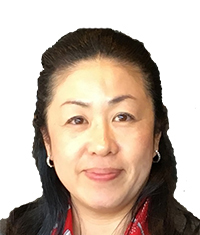 |
|
||||||||
|
|||||||||
Region of Research


In the quality improvement of additively manufactured (AM) metal components with 3D complex shape, it is necessary to establish a fundamental theory of the alloying design and process optimization to control microstructures and crystal orientation through understanding additively manufacturing mechanism based on a rapid solidification of metal powder and thermal cycle effects. This department focuses on research projects regarding the formation mechanism of ultrafine microstructures and supersaturated solid solution by rapid solidification process and mechanical behavior in multiscale analysis of selective laser melted (SLMed) materials.
Current Research Subjects
- Formation mechanism of unique microstructures and orientations of SLMed titanium alloys
- High-strengthen metal matrix composites fabricated by SLM process
- High strengthening mechanism of titanium alloys by bulk alloying in SLM process
- Deformation behavior of Gyroid scaffolds SLMed alloys and impact energy absorption performance

Prof.
K. Kondoh
(supplementary assignment)

Prof
J. Umeda
(supplementary assignment)

Assist. Prof.
S. Kariya
(supplementary assignment)

GB maps, IPF maps and corresponding contour PFs (0001)α of (a) as-fabricated CP-Ti and (b) as-fabricated Ti-0.52 wt.% N by SLM process.
A. Issariyapat, et al., Strengthening and deformation mechanism of selective laser-melted high-concentration nitrogen solute α-Ti materials with heterogeneous microstructures via heat treatment, Materials Science and Engineering A, 826 (2021) 141935.

Stress−strain curves of compression tests of 0.2 mm-strut size lattice structured Ti-Zr alloys with various cell sizes, porosities and %ZrH2 additions fabricated by SKM process. (b) Stress−strain curves of compression tests of 6 mm-lattice cell size with various strut sizes and %ZrH2 additions of Gyroid scaffolds.
A. Issariyapat, et al., Additive manufacturing and characterization of high strength Ti-Zr Gyroid scaffolds using pre-mixed Ti-ZrH2 powders, JOM, 73 (2021) 4166-4176.
Our Researches